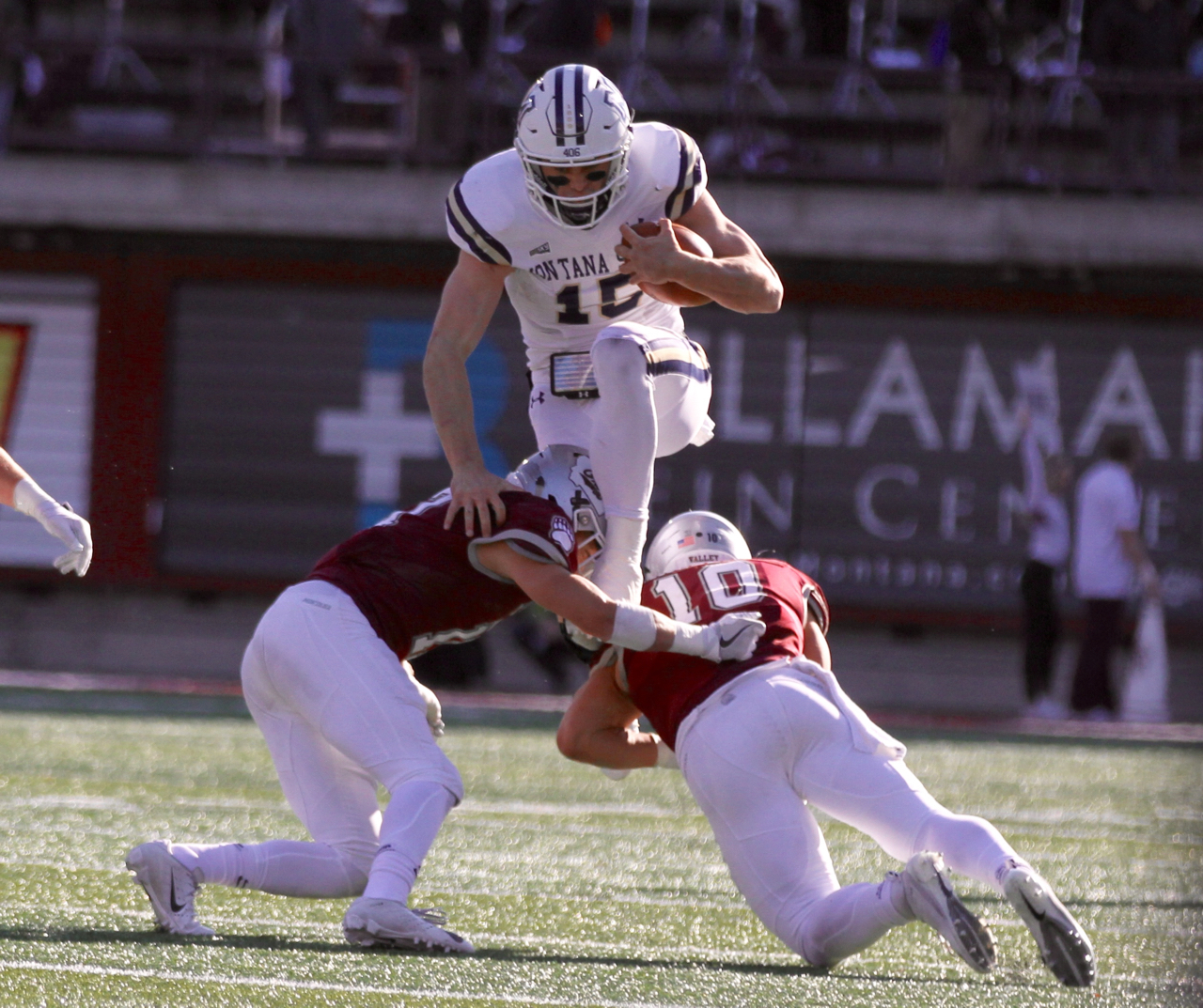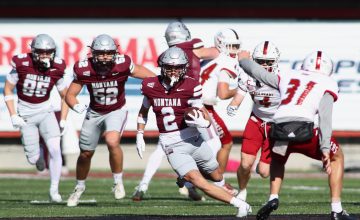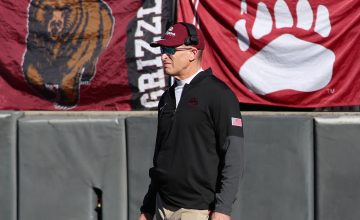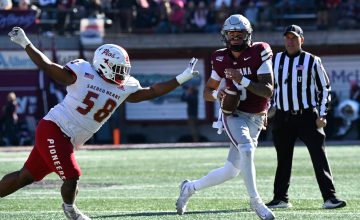Run-and-gun quarterback? No, more like run-and-run quarterbacks in the case of Montana State, where the Bobcats have seen over a decade of elite rushing signal-callers.
MSU has been blessed with some of the best running quarterbacks in the nation the past 12 seasons. Starting with DeNarius McGhee in 2010 and on through Tommy Mellott and Sean Chambers in 2022, Montana State has been able to throw off defenses from Power Five conferences on down.
McGhee was the second (Travis Lulay did the same from 2002-2005) Bobcat quarterback to join the 10,000/1,000 (passing/rushing) club when he completed his college career in 2013. He was also just the 14th quarterback in college football history to accomplish the feat.
Following McGhee, Dakota Prukop (2014-15) amassed 1,771 in just two (2014-15) seasons. Prukop gave way to Chris Murray, (2016-17) who ran for 1,878 over his two-year career, including becoming the second Big Sky quarterback to rush for more than 1,000 yards in a single season. His 1,133 yards as a sophomore in 2017 were the second-most in league history behind Cal Poly stud Chris Brown, who operated Poly’s option with precision and rushed for 1,265 in 2014. To that point, only three Big Sky quarterbacks (Portland State’s Conner Kavanaugh in 2011 was the other) had surpassed 1,000 yards rushing in a single-season.

Then along came Troy Andersen and his sensational 2018 season that featured a Big Sky Conference quarterback record of 1,412 yards rushing and 21 touchdowns. That marked the mythical Dillon product’s only year playing (almost) full-time quarterback, although because of his position versatility, he played offense as a running back and Wildcat quarterback the season before and the season after he lined up under center at MSU. He finished his distinguished career with 2,260 career rushing yards (9th in school history) and 33 rushing touchdowns, the second-most in the history of the Bobcats.
A year with Tucker Rovig and running quarterback Travis Jonsen manning the quarterback duties for most of the season followed in 2019 before Matt McKay and Tommy Mellott sparked the 2021 run to the FCS title game with their combined 1,032 rushing yards.

So far in 2022, it’s just been more of the same with Mellott and Chambers on a blistering pace. The duo has combined for 390 yards (6.3 per carry) and eight touchdowns in the first three games. Should they maintain that pace they’ll eclipse Andersen’s solo effort from 2018 by 18 yards (1,430) even if MSU misses the playoffs (Andersen got two extra games from MSU’s playoff run that year).
With their top three running backs out (All American Isaiah Ifanse is not expected back until November, transfer Kaegun Williams is out for the season, and Lane Sumner is out for at least another week) the load may fall on those two for a few weeks to come.
“Our two quarterbacks, I would say are our best runners right now,” Vigen said. “That’s the truth. How much can we tax them? And the fact that we have two of them, does that help? Yes.
McGhee started the run despite priding himself on being a pocket passer. He suffered a severe shoulder injury in high school and knew if he wanted to sustain his career, he’d have to veer away from running the ball. Still, the most consistent quarterback in MSU history managed to run for 1,133 yards over his four seasons as a starter, sometimes extending the pocket, sometimes extending the play and sometimes getting loose in the open field.
Prukop had to wait until his sophomore year and McGhee’s graduation before he began electrifying fans across the Big Sky Conference. Despite suffering a leg injury, he led the Bobcats in rushing with 966 yards and guided the ‘Cats into the FCS playoffs in 2014. He would run for 25 touchdowns in his two seasons.
Prukop could’ve tacked on to his totals, but he transferred to the University of Oregon, where he earned the game one starting job for the Ducks before giving way to future NFL star Justin Herbert of the Los ANgeles Chargers. Prukop was good for 5.4 yards per run during his career.

Even though he followed in Prukop’s footsteps, Murray still stood out. He may have been the most mesmerizing runner at MSU as his style was more pronounced simply due to his inability to find success throwing the ball all while making some of the most memorable runs in school history.
Tops among those was a score in the annual Cat-Griz game where he dove for the end zone and was hit in the legs which sent him into a flip only to land on his feet in Washington-Grizzly Stadium’s raucous north end zone. Murray’s 1,124 yards in 2017 was the school record for quarterbacks until Andersen came along. He also rushed for 21 touchdowns in his two seasons. Murray averaged 6.1 yards per tote.
With Andersen, like Murray, the threat of passing the ball was essentially a trick play. What Andersen had that Murray, and few other quarterbacks in football history, didn’t have was a menacing presence. Few defensive backs, or linebackers for that matter, had it in them to try and lay a solid hit on the 6-foot-4, 240-pound mass of muscle and athleticism.
Since 2014 here are some #MSUBobcatsFB QB per Rush averages: Andersen (2018) 6.9
— Tom Stuber (@88tomcat) September 21, 2022
Mellott (2021-22) 6.3
Mell/Cham (2022) 6.3
Murray (2016-17) 6.1
Jonsen (2018-19) 6.0
Prukop (2014-15) 5.4 @SkylineSportsMT
Commit too much to landing a big blow on Andersen and you risk either being sidestepped for a touchdown or being sent to the trainer’s table. Andersen’s exploits are already a thing of legend in Montana just three seasons removed from his quarterbacking days, which lasted just one season.
He moved to his more natural linebacker position the final two seasons. Andersen averaged a whopping 6.9 yards per carry in a season that saw the Bobcats finish with two 1,000-yard rushers – Ifanse being the other.
While Rovig wasn’t a runner, MSU still had that a running presence with Travis Jonsen running plays out of the Wildcat formation. Jonsen first saw action as a runner in 2018 when he would spell Andersen. He collected 199 yards and five touchdowns before taking a more active role in 2019 where he gained 526 yards and scored eight touchdowns. Jonsen wasn’t used quite as exclusively as other quarterbacks during his time at MSU – he played wide receiver primarily – but he would end up averaging 6.0 yards per carry, which is in line with the group.
In 2021 Mellott did the bulk of the quarterback running even before he was thrust into the starter’s position to open the FCS playoffs. His 716 yards were second only to Isaiah Ifanse’s school record total on last year’s squad and his 10 rushing touchdowns matched Ifanse’s effort.
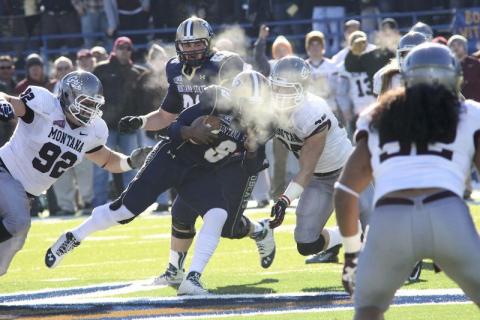
McKay, who transferred from MSU the week before the FCS playoffs began, added 316 yards and two touchdowns, including a staggering jaunt of 56 yards against Eastern Washington in what would be his best day as a Bobcat. Mellott was the national darling of the 2021 FCS playoffs. He ran for 180 yards and two touchdowns in his debut against Tennessee-Martin, then had 76 more rushing yards and pair of rushing scores – to go along with his two touchdown passes and touchdown reception – in the quarterfinals against No. 1 ranked and seeded Sam Houston State.
His opus performance came in the semifinal game where he ran for 155 yards and two TDs and threw for another 233 yards and a pair of scores in the 31-17 win over South Dakota State to advance MSU to its first title game since 1984. Mellott averaged 6.3 yards per carry in 2021.
This season Mellott and Chambers have been unstoppable. Chambers rolled for 126 yards on just seven carries in the second game of the season against Morehead State from the lowly Pioneer League, then Mellott hit an Oregon State team on the rise with 135 yards rushing on 18 carries, while Chambers ran for three rushing scores. The two are averaging 6.3 yards per carry. Chambers is tied for the FCS lead with seven rushing touchdowns already this season.
All told the Bobcats have gotten 8,367 yards rushing from those eight quarterbacks since 2010. An average of 725 yards a season. That trend doesn’t appear to be looking at change in the next few years with Mellott just a quarter of the way through his sophomore campaign.
“We are going to look a little different then the norm and that’s just the reality of it,” Vigen said. “We will get Lane back sooner than later and we will get Isaiah back eventually. We will have to keep figuring out how to get it done.”
The Bobcats travel to Cheney, Wash. this Saturday to take on the Eastern Washington Eagles at 2:00 PM.

